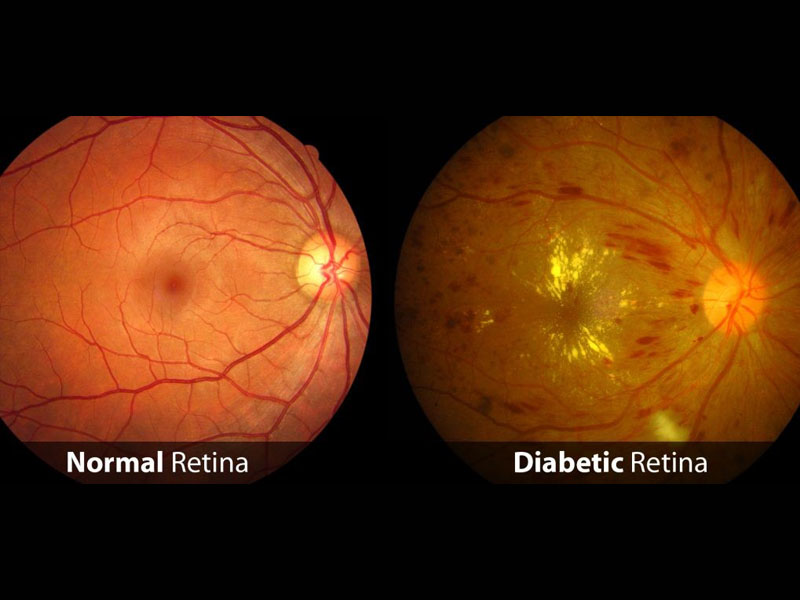Diabetic Retinopathy
What is it?
The blood vessels of the retina deteriorate. These altered vessels may be enlarged, causing the escape of fluid (plasma lipids and / or blood), and can even be occluded, leaving part of the retina without blood circulation. All these phenomena which occur due to diabetes can cause progressive damage in very fine structures of the eyeball, leading to a severe decrease of vision and even, without proper treatment, lead to blindness.
Symptoms
The slow progressive decrease of vision in a diabetic person is often translated as the presence of fluid in the central part of the retina (“macular edema”). Sometimes, the disease presents with an acute intraocular hemorrhage, being the first symptom the sudden and very alarming appearance of stains, partially or totally obscuring vision. However, it is important to remember that diabetic retinopathy may be present, even in very advanced stages, and not give rise to any visual discomfort.
Treatment
Some patients with diabetic retinopathy only require periodic monitoring of their eye condition. In other cases it is necessary to apply laser, selectively, on the abnormal vessels of the retina to reduce edema or on ischemic areas (with no blood flow) to prevent disease progression to more severe forms. In more advanced cases, such as intraocular hemorrhage and / or retinal detachment, we must use methods of intraocular microsurgery (vitrectomy), usually conducted under local anesthesia.
The laser surgery procedures are highly effective in the treatment of diabetic retinopathy, provided they are properly indicated and performed by an ophthalmologist specialized in this disease. Also, intraocular drugs can be used, which may be effective in some cases.
Prevention
Diabetes mellitus is a global metabolic disorder that causes various vascular complications in the body. In addition, when the disease coexists with other general disorders (hypertension, obesity, increased cholesterol, etc.), the risk of ocular complications is multiplied. Therefore, the first recommendation for a patients with diabetic retinopathy is to be very disciplined with taking care of their general health, diet, weight control and the guidelines that will be marked by their endocrinologist. Diabetes cannot be cured, but its good control already implies a great achievement.

